It was Show & Tell time before our foraging class Sunday in Sarasota. Thanks to my friend Bryan Detweiler we had a lot to chat about before wandering about the preserve for several hours. Foremost was the Buyna Bunya cone (center top photograph.) It wasn’t plump with seeds and might have fallen early but the season is upon us. A Bunya Bunya Tree in Altamonte Springs — north of Orlando — hasn’t dropped any cones yet but it will. After class we sat around taking the cone apart looking for seeds (some from another cone are to the right of it.) Once you have the seed out of its casing it is best to roast them.
Also on the table are pine cones (and how to tell which ones have “pine nuts” and which ones don’t) some False Roselle, Creeping Cucumber, Amaranth, Mahoe, Sea Grapes, wild muscadine grapes, cultivated muscadine grapes, Japanese Boxwood (not edible) Yaupon Holly and some American Nightshade. The park had sustained some clearing which unfortunately took out two of three Tallow Plum shrubs. But we got to wander around some of the local neighborhoods and saw a Jambul Tree just beginning to fruit. We also spied Society Garlic and the Ti plant.
Saturday’s foraging class was in Cassadaga on the eastern side of the state. There, too, we found a lot of grapes ripe and ready for harvesting. The crop is early this year. We also had a chance to study Sugarberries and Persimmons up close. It looks like it will be a good year for Persimmons with the trees showing a lot of green fruit. We’ll have to wait until about October for them to ripen but who knows this year. One of the more interesting aspects of the Colby-Alderman Park is one finds Wild Pineapples, Bamboo and very vigorous “wild” grapes there. I think those grapes are muscadine cultivars from decades ago. I often find those three species in combination at the location of old resorts, hotels or abandoned train station. These are sites where towns used to be but are now often just a bronze sign along a rails-to-trails bike path. One other slightly odd seasonable edible we saw was Coral Vine. It has edible roots that rival an almond or so in size and can sometimes be hard to find because the vine grows up, over, and down trees. And we found one edible chanterelle.
The Southern Wax Myrtle — Myrica cerifera —gets little respect. It’s an off-green shrub and a native. The most flamboyant it gets are some small gray-blue berries snuggled tightly around outer branches. American Natives and early settlers used the shrub extensively. The leaves can be used as a tea, marinate, and flavoring. The berries can be a dried spice and a source of wax. People smoked the leaves to keep away insects and the root bark was used to induce labor. And a tea from its leaves just might help you live longer.
Myrica cerifera is one source of the flavonoid Myricetin. According to research Myricetin is an antioxidant capable of removing free radicals from the body. As a polyphenol it regulates the “p38 MAPK family” of “stress-responsive signaling molecules.” Those regulate aging in many body tissues. Myricetin is also reported to regulate cell self-repair particularly those involved with metabolism. Research shows Myricetin increases bone-forming cells, increases cancer cell death, reduces vessel constriction, increases insulin sensitivity, reduces fat storage, reduces fatty liver disease and liver cancer formation, increases learning and memory and reduces diabetic kidney damage. That’s quite a lot from a shrub many people would overlook. What I find interesting and worrying is the scholarly articles did not carry any pregnancy warnings but should have. The root bark was used to induce labor. You can read about the Southern Wax Myrtle here.
One “cactus” species that has very edible fruit is the Cereus. It also has a lot of false species and or names made up by commercial sellers. Even without that naming confusion Cereus would be difficult to identify. It involves the number of spines and their length et cetera. One particular species has become commercially popular as “Dragon Fruit.” Locally Cereus that produce edible fruit are also called “Candle Cactus.” They’re easy to spot: Tall and skinny, ribbed. They have large cream, off-white or light yellow flowers that open at night which in time turn into pink football-shaped fruit. Unlike many cactus species the seeds in these fruit are very soft and quite edible. You can read more about the Cereus here.
Unfinished Mushroom Business: In June 2013 three Florida men were arrested in a park in this county for possession of psilocybin mushrooms. One of the men also had a small alligator in his back pack. That made national news. (See photo left.) Because of a Florida Supreme Court ruling in the 1978 (Richard D. FISKE, Appellant V. STATE of Florida, Appellee. No. 50796) it is rare for someone to be convicted of simple possession of psilocybin mushrooms. The high court ruled that while possession of psilocybin is indeed illegal the state failed to list the species of mushrooms the chemical was in as it had done with other restricted chemicals and species. The shortcoming in the law has not been addressed by subsequent legislatures. In most cases since that ruling defendants just said they had no idea what they had in their possession was psilocybin mushrooms. Most of the time the charges were reduced to trespass or property destruction or dropped. So what happened to the three men?
The fellow with the alligator had a bond set for three infractions: Possession of the alligator, possession of the mushrooms and destroying park property (picking mushrooms.) He pleaded Nolo Contendre (“no contest” neither professing innocence nor admitting guilt.) He was found guilty of possession of the alligator and destruction of park property but no mention of the possession of psilocybin mushrooms. He was, however, in violation of his probation for a previous unrelated infraction which got him some jail time. The second defendant pleaded not guilty to destruction of park resources which he later changed to Nolo Contendere. Adjudication was withheld. No mention of the psilocybin mushroom and the court record shows no conviction on that count. The third defendant pleaded Nolo Contendere to possession of psilocybin and adjudication was withheld.
Possession of said mushrooms is a felony in Florida but the state’s supreme court ruling has reduced the number of conviction to near zero. A 2010 psilocybin mushroom possession case in Naples, Florida, was reduced to trespass (a couple were found in a pasture collecting mushrooms.) The two defendants said they had no idea what the mushrooms were. A St. Augustine man was arrested in Palm Beach County in 2012 on felony possession of psilocybin mushroom growing on his boat. As of this writing — five years later, July 2017 — that case is still open with no conviction. And in June 2015 a Hillsborough County man, 25, was arrested after a deputy saw in his domicile multiple bins containing psilocybin mushrooms, 63.9 pounds worth to be exact, and 35.9 grams of marijuana. He was charged with possession of cannabis, drug paraphernalia, a controlled substance and manufacture of a controlled substance. As of this writing the case is closed, no conviction listed in the online public records regarding psilocybin.
As I often pick mushroom, because I don’t know what they are and I want to identify them, should I unintentionally err when the officer asks I will plead ignorance.
Upcoming Foraging Classes: Classes are about four hours long. For more details click the link at the end of the schedule below.
Sunday, July 23rd, Sunday, Aug 21st., Venetian Gardens, 201 E. Dixie Ave, Leesburg, FL 34748, 9 a.m. Meet in the parking lot between the pool and the lake. (The wading birds are quite friendly so if you like to feed them and take photos it’s an opportunity.)
Saturday July 29th, Bayshore Live Oak Park, Bayshore Drive. Port Charlotte. 9 a.m. Meet by the parking lot across from Ganyard St.
Sunday, July 30th, Dreher Park, 1200 Southern Blvd., West Palm Beach, 33405, 9 a.m.
Saturday August 5th, John Chestnut County Park, 2200 East Lake Road, Palm Harbor, FL 34685. Meet at the trail head of the Peggy Park Nature Walk, pavilion 1 parking lot. 9 a.m.
Sunday, August 6th, Wickham Park: 2500 Parkway Drive, Melbourne, FL 32935-2335. Meet at the “dog park” inside the park. 9 a.m.
To learn more about the classes click here.
All of Green Deane’s videos available for free on You Tube. They do have ads on them so every time you watch a Green Deane video I get a quarter of one cent. Four views, one cent. Not exactly a large money-maker but it helps pays for this newsletter. If you want to see the videos without ads and some in slightly better quality you can order the DVD set. It is nine DVDs with 15 videos on each. Many people want their own copy of the videos or they have a slow service and its easier to order then to watch them on-line. They make a good gift for that forager you know. Individual DVDs can also be ordered. You can order them by clicking on the button on the top right of this page or you can go here.
Want to identify a plant? Looking for a foraging reference? Do you have a UFO, an Unidentified Flowering Object you want identified? On the Green Deane Forum we chat about foraging all year. And it’s not just about warm-weather plants or just North American flora. Many nations around the world share common weeds so there’s a lot to talk about. There’s also more than weeds. The reference section has information for foraging around the world. There are also articles on food preservation, and forgotten skills from making bows to fermenting food. One special section is “From the Frightening Mail Bag” where we learn from people’s mistakes. You can join the forum by clicking on the button on the upper right hand side of this page.
This is issue 266
If you would like to donate to Eat The Weeds please click here.
On a personal note: Also it is my annual time to look for a possible rental in southwest Florida. If you know of a small house, duplex, or mother-in-law cottage that will be available this fall please let me know. Two rooms and a kitchen is fine. Three bedroom and two baths are nice but too large for me and two cats. I can also trade out handyman maintenance and landscaping. Alternatively if you know of an RV for sale in reasonable condition that’s a possibility, too. Maybe it’s time to take Green Deane On The Road.


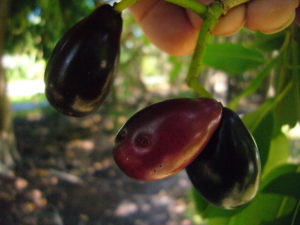
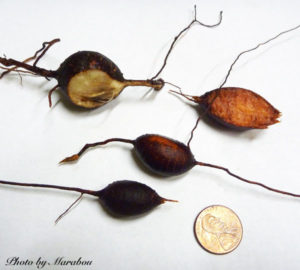
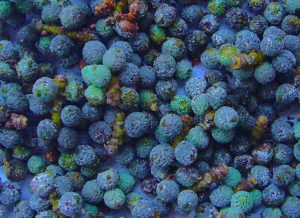
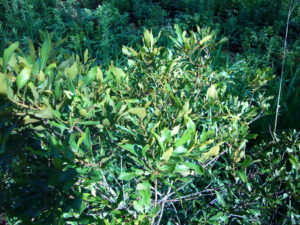

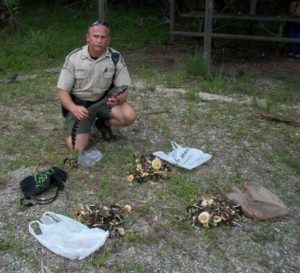
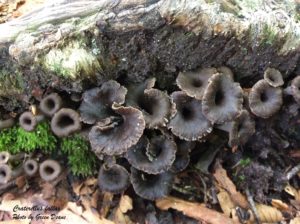
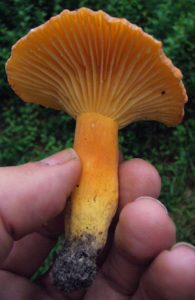
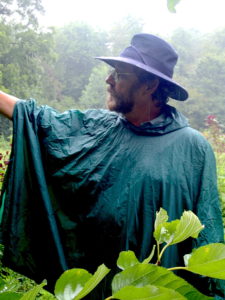

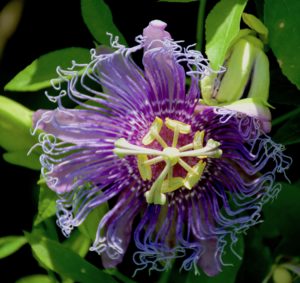

I like very much the bright colorful table of the various parts of several plants. My concern is Nigrum solanum , which is at present flourishing ;with many plants blossiming while some have developed fruits and some of the fruits have grown to become ripe. I’ve mentioned this plant as one familiar among others especially during such rainy season nowadays we witness in Khartoum – Sudan. As l’ve learned about poisoning due to nonripened fruits as well as eating excess of ripe fruits, I thought it is nessary to convey this information to my Arabic readers of my book ” Back to Nature- Foraging ” . I’m expecting permission receipt from the authorities within ten days to come to get publicity of the book. I must add that I I’ve nursed the plant to get enough fruits for making jam as part of my breakfast as well as drying the fruits which then compete well with sultanas.